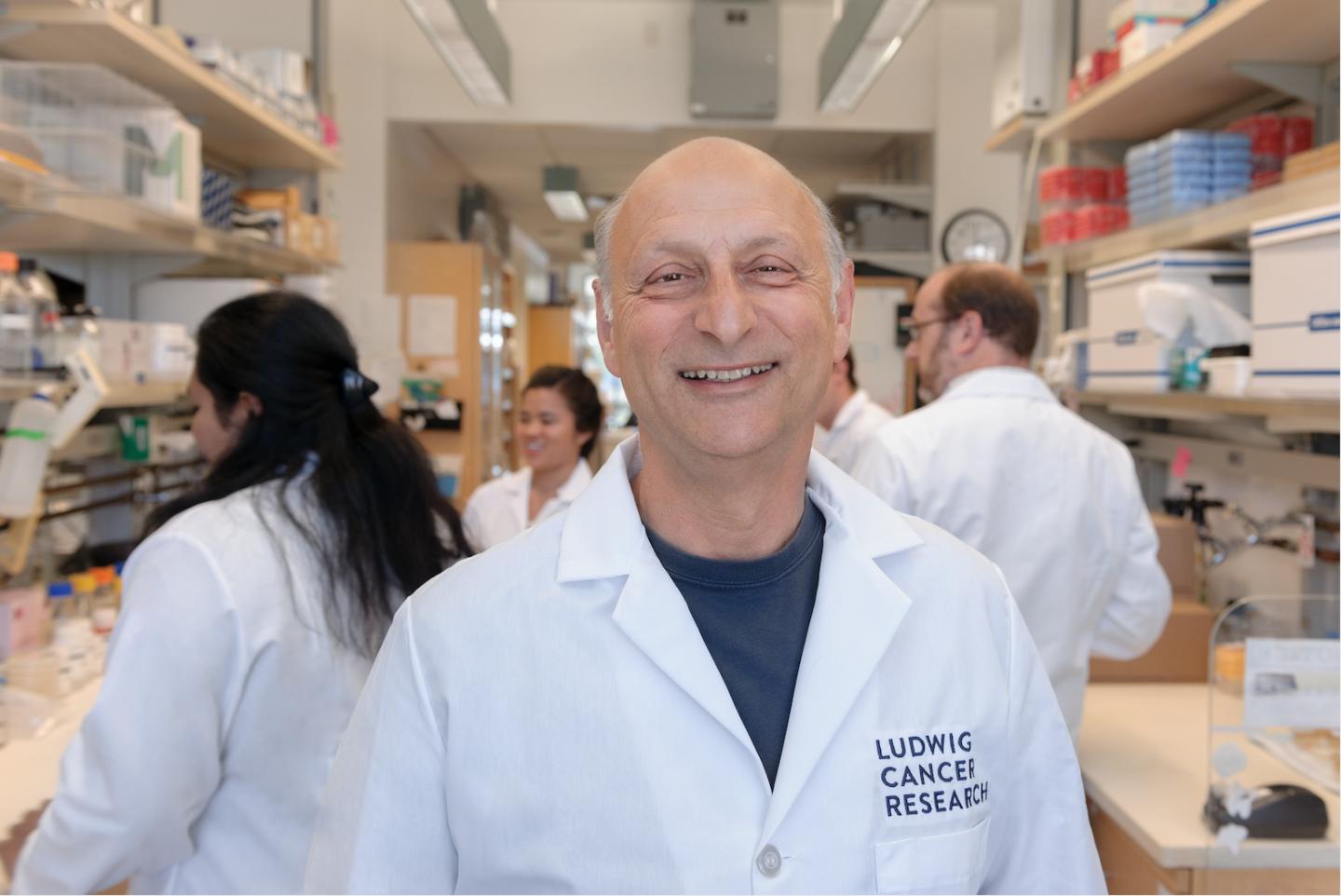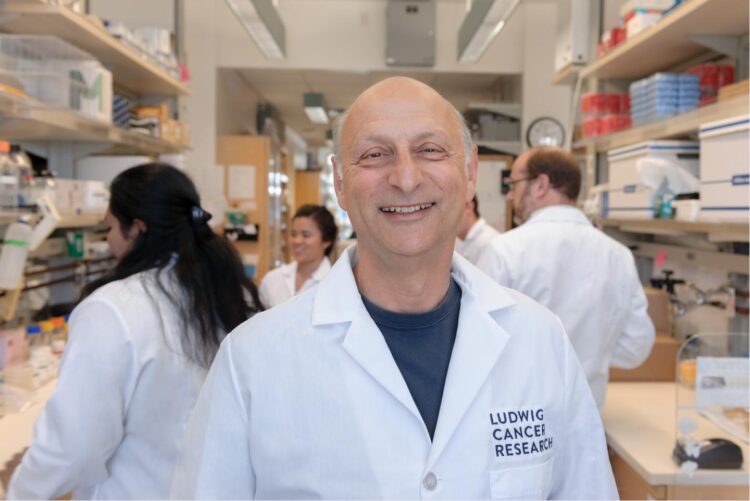
Credit: Ludwig Cancer Research
JULY 27, 2020, NEW YORK — A Ludwig Cancer Research study has identified a new instance in which the simultaneous mutation of two nonessential genes–neither of which is on its own vital to cell survival–can cause cancer cell death.
Led by Ludwig San Diego Member Richard Kolodner and published in the current Proceedings of the National Academy of Sciences, the study also demonstrates that this deadly synergy, or “synthetic lethality,” can be replicated by a drug-like molecule and could be exploited for cancer therapy.
The development and FDA approval of a new generation of drugs, called PARP inhibitors, to treat malignancies with defects in the tumor suppressor genes BRCA1 and BRCA2, which are implicated in breast, ovarian and many other types of cancers, has generated considerable interest in exploiting synthetic lethal interactions for the development of cancer therapies.
Scientists, including Kolodner’s group, are on the hunt for other synthetic lethal interactions in cancers. “PARP inhibitors are a great advance, but they’re not perfect,” says Kolodner. “Patients can become resistant to them, so there’s always a need for newer and better treatments.”
Building from studies conducted on yeast cells, Kolodner and colleagues discovered that disabling or removing FEN1, a mammalian gene that is important for DNA replication and repair, is detrimental to cancer cells with mutant forms of BRCA1 and 2.
“We’ve provided data that should make people consider FEN1 as a potentially interesting therapeutic target and demonstrated how yeast can be used to predict a whole range of synthetic lethal interactions, which can then be validated in bona fide cancer cell lines with genetic tools,” says Kolodner.
In previous work using the yeast Saccharomyces cerevisiae as a model to identify and study genes that support the integrity of the genome, Kolodner and his colleagues found that the RAD27 gene has synthetic lethal interactions with 59 other non-essential yeast genes. Two such genes of note are RAD51 and RAD52, which play roles in DNA recombination.
FEN1 is a close counterpart, or homolog, of RAD27 in mammals. Based on their yeast studies, Kolodner and colleagues predicted that FEN1 would have synthetic lethal interactions with BRCA1 and BRCA2, which function in the same biochemical pathway in mammals as RAD51 and RAD52 do in yeast.
To test this hypothesis, they synthesized four FEN1-blocking molecules and used the best of them, C8, to suppress FEN1 activity in cancer cell lines with or without BRCA mutations. C8 turned out to be an effective killer of BRCA-mutant cells.
They then demonstrated that genetic disruption of FEN1 expression had the same effects as C8 did on BRCA-mutant cells, confirming that C8 worked by inducing synthetic lethality.
Finally, the scientists grafted C8-sensitive and C8-resistant tumors into mice and showed that C8 significantly inhibited the growth of the C8-sensitive tumors but not the C8-resistant tumors. Interestingly, not all the cancer cell lines and tumors that responded to C8 treatment were BRCA deficient, indicating that FEN1 has synthetical lethal interactions with other genes as well.
These findings identify FEN1 as a novel target for drugs to treat a variety of malignancies by the induction of synthetic lethality. They also demonstrate that yeast-based screens are a powerful tool for accelerating the discovery of synthetic lethal interactions of potential therapeutic value–an ongoing project in the Kolodner laboratory.
###
Aside from his Ludwig post, Richard Kolodner is also a professor of cellular and molecular medicine at the University of California, San Diego.
This study was supported by Ludwig Cancer Research and the U.S. National Institutes of Health.
About Ludwig Cancer Research
Ludwig Cancer Research is an international collaborative network of acclaimed scientists that has pioneered cancer research and landmark discovery for nearly 50 years. Ludwig combines basic science with the ability to translate its discoveries and conduct clinical trials to accelerate the development of new cancer diagnostics and therapies. Since 1971, Ludwig has invested $2.7 billion in life-changing science through the not-for-profit Ludwig Institute for Cancer Research and the six U.S.-based Ludwig Centers. To learn more, visit http://www.
For further information please contact Rachel Reinhardt, [email protected] or +1-212-450-1582.
Media Contact
Rachel Reinhardt
[email protected]





